#Freedmens Bureau
Explore tagged Tumblr posts
Text

This is Washington DC Freedmans Hospital Nurses Class of 1930. Splendid
*On this date, 1862, the Freedmen’s Hospital School of Nursing opened. This was a hospital for Blacks founded by Dr. Daniel Hale Williams.
Freedmen's Hospital began during the American Civil War after the start of the Freedmen's Bureau, a social service system. Many freed slaves poured into Washington, D.C., hoping their needs would be supplied. Because of these circumstances, the War Department of the Federal Government decided to establish a "Freedmen's Bureau" to create an emergency facility to care for the sick and needy.
In 1967, an Act of Congress transferred Freedmen’s Hospital and School of Nursing to Howard University. 1969 Howard University College of Nursing was established with Dr. Anna B. Coles as its first Dean. Freedmen's Hospital School of Nursing was phased out and admitted its last class in 1970. It graduated its last class in 1973. By then, 1,700 nurses had graduated from Freedmen's Hospital of Nursing.
#This is Washington DC Freedmans Hospital Nurses Class of 1930. Splendid#Black Nurses#Black Hospitals#Howard University#Howard University Hospital#Freedmens Bureau#Black Nurses save Black Lives
5 notes
·
View notes
Link
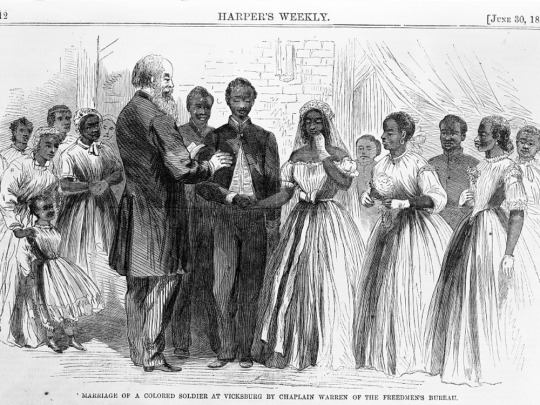
Anyone with an internet connection can now access more than 3.5 million records documenting the lives of free Black people during the Reconstruction period. Created by genealogy company Ancestry, the free online portal amounts to a treasure trove of information about Black communities in the United States between 1846 and 1878, reports Rosalind Bentley for the Atlanta Journal-Constitution (AJC).
The newly debuted tool will allow researchers to study the records of the Bureau of Refugees, Freedmen and Abandoned Lands (also known as the Freedmen’s Bureau) with unprecedented ease. Though some of the documents, which are housed at the National Archives and Records Administration (NARA) in Washington, D.C., have been digitized previously, the searchable database offers a new level of accessibility. Users can find the resource here.

2 / 3 The Freedmen's Bureau aimed to provide food, shelter, clothing, medical care and more to newly freed Black Americans in the wake of the Civil War. Library of Congress

The Freedmen’s Bureau dates to the end of the Civil War—the bloodiest conflict in American history. Established by Congress in March 1865, the program offered education, medical care, food, clothing and labor contracts to displaced Southerners, including more than four million newly freed Black Americans. Bureau officials also helped the formerly enslaved locate their loved ones, investigate incidents of racist violence and legally marry their spouses, per the Smithsonian’s National Museum of African American History and Culture.
A social relief program of unprecedented scope, the bureau remained in operation for less than a decade. In 1872, pressure from white Southern legislators and the threat of vigilante violence (such as attacks by the Ku Klux Klan) led Congress to abandon the project.
Today, historians continue to debate the effectiveness of these short-lived relief efforts. But the millions of pages of records that officials produced during this period have become a boon for historians and genealogists eager to study their ancestors and learn more about the lives and concerns of newly freed Black people.
For many formerly enslaved people, bureau documents represented the first time their names were written down in official records of any kind, notes the AJC. Prior to 1870, U.S. censuses neglected to include the names of enslaved people, instead listing them statistically under their enslavers’ names or referring to them as numbers.
The bureau’s handwritten records are often unwieldy and difficult to read. As Allison Keyes reported for Smithsonian magazine in 2018, the Smithsonian Transcription Center offers ongoing opportunities for volunteers to translate the 19th-century cursive in more than 1.5 million image files into searchable text.
During a virtual roundtable announcing the Ancestry initiative, genealogist Nicka Sewell-Smith said, “I spent 14 years going through this collection going image by image.” Per the Grio, she added, “So with the [new, searchable] collection, in the manner in which it’s being released, that changes the game quite a bit for a lot of people.”
Stan Deaton, a senior historian at the Georgia Historical Society who was not involved in the Ancestry project, emphasizes the possibilities opened up by the portal.
“It’s hard to overstate how important this could be,” Deaton tells the AJC. “The Freedmen’s Bureau was … in many ways was the first social service agency.”
The historian adds, “So [the Ancestry project] is very important in capturing the lives of four million people who were newly freed and starting new lives in one of the greatest social changes in this country’s history. This could be a gold mine.”
Editor’s Note, August 27, 2021: This article has been updated to clarify how enslaved people were counted in the census prior to 1870.
#Freedmen#Black Freedmen#Newly Digitized Freedmen's Bureau Records Help Black Americans Trace Their Ancestry#Freedmens Bureau#freedmens bureau searchable database available#geneology#Black History#Black Freedmen Matter
4 notes
·
View notes
Text
How genealogy is used to track Black family histories
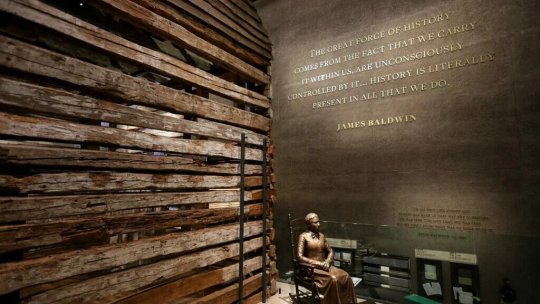
Our names are important to us. They tell us who we are and often, who we come from. So imagine suddenly discovering the last name you’ve always carried… might not actually be the name you should have.
Alex Neason began looking into her family’s history after discovering her great grandfather’s name was different from what she believed for her whole life. In her search to discover the story of that last name, she enlisted genealogist Nicka Sewell-Smith.
For Black Americans, genealogy can fill in the blanks left by the legacy of slavery and racism in the U.S. Services like the Freedmen’s Bureau and Slave Voyages provide free access to records and documents to help with that search. We talk about the power of genealogy in fostering knowledge and connection for Black Americans.
Source
If you click on the word “source,” it’ll take you to the article where you’ll see a LISTEN button. It’s a 30-minute audio that discusses the info provided in the article even further. Y’all know I’m big on getting people to trace their lineage. All that “we don’t know where we come from.” Who told you that? Everything in the US is in plain sight. Everything.
Discover your fam.
I assist others when they reach a roadblock, like getting past the “1870 wall.” But you can’t beat the feeling of you discovering them on your own. Unearthing your history, seeing photos, reading stories that were stored, and saying their names that haven’t been said for centuries. I’ve been tracing mine (scanning, logging) since my family reunion in 2005 through oral family history and obituaries (those are records), and since 2011 through databases of US archived records like ancestry.com (purchased by BlackStone) and familysearch.org (free database owned by the Latter-day Saints Church). There are others, but those are the main two I use for comparative results.
Archiving Centers, Census Records & Other Records
There are archiving centers in every state and DC that also keep records for those particular states and the federal capital. There’s a footnote on all records that tells you where they are housed. And please...Don’t just do a simple pedigree chart of your family tree. Get to know your great-aunts, great-uncles and cousins. It’s also helpful for seeing who lived around who (fam often lived next door to each other) and puts more of the pieces together of your complete family story. You can see the land and acres they owned or your fam today still owns, as well as if that land was stolen from them.
US census records go back to year 1790. Depending on when or if your ancestors were enslaved or free: you’ll find them attached to slave logs that have been made available online or kept in archiving centers (you go there), or or they’ll be listed on census records as free persons (1790-1710), free colored male/female (1820-1840), Black (1850-1920), Mulatto (1850-1890, 1910-1920) or Negro (1900, 1930-1950). “New” census documents are put on sites, like ancestry.com, every 10 years. As of 2023, you can only trace from 1950 to 1790. The 1960 census will be out in 2030. How to trace from 1950 to today, birth, death and residential records. So again, depending on the census year, you’ll notice your ancestors racial classification change throughout documents for obvious reasons.
Keep in mind that the the largest slave trade for the United States was the domestic slave trade. In house human trafficking and selling (in addition to property insurance of enslaved people and the selling of enslaved people as the building block of Wall Street’s stock exchange) is how US capitalism was built. So just because you know a lot of your people are from Tennessee, for example, it doesn't mean that’s where that line stayed. I’ve found my ancestors throughout 7 states (so far). Another example, people with Louisiana roots damn near always have ancestors who were trafficked from early Virginia. Going beyond year 1790, records were kept in Christian and Catholic churches and old family history books so most of those documents are scanned online and/or still kept in the churches. I’m talking books books.
If your ancestors walked the Trail of Tears, or were caught as prisoners of war or trafficked to Indian Nations to be enslaved, you’ll find an Oklahoma Indian Territory and Oklahoma Freedmen Rolls section on ancestry.com. You can discover more info on sites, like the Oklahoma Historical Society. (Every state has its own historical society for archived genealogical records.)
Here’s the National Archives.
Also for Oklahoma, you may also find your ancestors in Indian Census Rolls (1855-1940) as [insert tribe] Freedmen, depending if they weren’t rejected through the “blood quantum” Dawes Rolls for not being the new light to white status. You’ll see their application and the listed questions & answers with or without a big void stamp. And on the census, you’ll even see the letter I (pronounced like eye) changed to the letter B. This is also for those in Louisiana.
Freedmen’s Bureau & Bank Records
There were Freedmen’s Bureau records and Freedman’s Savings Bank records in other states. To see if your ancestors had their records in those systems, you can search by their name. The state and age will pop up with people having that name. It’ll give you a wealth of other info, like all of the kids and other fam if they were present or mentioned to the person who logged that info in. With the Freedmen Bank records, you can see how much money your ancestors put in there (that was later stolen from them by way of the United States government), which is still there today. It’s the biggest bank heist in US history (that they try to keep hush hush) with the equivalence of more than $80 million in today’s value stored in there today. Back then, it was valued almost close to $4 million. Stolen wealth met with bootstrap lectures.
Here’s a short video on that heist:
youtube
Today the bank is called the Freedman's Bank Building, located right on Pennsylvania Ave. Plain sight.
Trace your lineage.
There’s a lot more that I can list. But this is just the basics. Like I said before, it’s a more rewarding feeling when you discover your ancestors by yourself. You may reach roadblocks. Take a break. Try going the “Card Catalog” route on ancestry.com’s search engine. Don’t skip the small details.
SN: Slave Voyages isn’t a genealogical site, but rather a database for slave ship logs and the estimates of purchased Africans who became human cargo to be enslaved by country like USA, or by colonizers like Spain, Great Britain, etc.
#black americans#genealogy#lineage#ancestry#census records#freedmen's bureau#freedman's bureau#freedmen's bank#freedman's bank#american heist
212 notes
·
View notes
Text
In all the discussions over reparations, the omission of the Freedman's Bureau is a good look at how much the people who discuss what was and wasn't done actually know or prefer to neglect:
Before going to Rutherford B. Hayes and the Compromise of 1877, and with it the Posse Comitatus Act, a look at two other aspects of reality for Black people in the postwar South. The first is why one of those HBCUs has the name 'Howard,' after General Oliver O. Howard. The Northern Leonidas Polk without the treachery, he was a very devout Christian and a very moral man but a better person with prayers than he was battlefield leadership. His leadership of the Freedmen's Bureau was the first of many organizations in US history dedicated to reducing poverty and actually helping people in need. This is the closest the US government ever came to actually providing reparations and its omission from the writings of white supremacists is more to be expected than those of hoteps disappointed the US government doesn't give them the power to dismantle without a fight what they'd have to fight to get and which they refuse to do for the same reason the other 101st Chairborne do.
It had very real limitations, but it was also the thing that both actually existed and was one of the main faces of the military occupation the South hated so much.
#lightdancer comments on history#black history month#us history#military history#freedmen's bureau#oliver o howard
1 note
·
View note
Text

"Slavery, Abolition, Emancipation and Freedom" is a project from Houghton Library to make primary sources on African-American history freely accessible to all.
United States. Bureau of Refugees, Freedmen, and Abandoned Lands. [Circulars, etc., issued by the commissioner of the bureau of refugees]. Galveston [Texas], 1865-1868.
55-12
Houghton Library, Harvard University
295 notes
·
View notes
Text
Black Americans have been demanding compensation and restitution for their suffering since the end of the Civil War. 40 Acres and a Mule remains the nation’s most famous attempt to provide some form of reparations for American slavery. Today, it is largely remembered as a broken promise and an abandoned step toward multiracial democracy. Less known is that the federal government actually did issue hundreds, perhaps thousands, of titles to specific plots of land between 4 and 40 acres. Freedmen and women built homes, established local governments, and farmed the land. But their utopia didn’t last long. After President Abraham Lincoln was assassinated, his successor, Andrew Johnson, stripped property from formerly enslaved Black residents across the South and returned it to their past enslavers. Over the course of two and a half years, a team of Public Integrity reporters, editors, and researchers identified 1,250 Black men and women who had earned land as reparations after the Civil War. From there, the team conducted genealogical research to locate living descendants of many of those who had received and then lost the land. For the first time, these living Black Americans were made aware of the specific land that had been given to and then taken away from their ancestors. This project is an unprecedented and innovative use of Freedmen’s Bureau records—an impossible task for most of American history, until recent advances in genealogical research and the digitization of thousands of pages of Reconstruction-era documents made it feasible.
"Forty Acres and a Lie": incredible work in investigative journalism from Reveal
58 notes
·
View notes
Text



Special Field Orders, No. 15 (series 1865) were military orders issued during the American Civil War, on January 16, 1865, by General William Tecumseh Sherman, commander of the Military Division of the Mississippi of the United States Army. They provided for the confiscation of 400,000 acres (160,000 ha) of land along the Atlantic coast of South Carolina, Georgia, and Florida and the dividing of it into parcels of not more than 40 acres (16 ha), on which were to be settled approximately 18,000 formerly enslaved families and other black people then living in the area.

The orders were issued following Sherman's March to the Sea. They were intended to address the immediate problem of dealing with the tens of thousands of black refugees who had joined Sherman's march in search of protection and sustenance, and “to assure the harmony of action in the area of operations.” Critics allege that his intention was for the order to be a temporary measure to address an immediate problem, and not to grant permanent ownership of the land to the freedmen, although most of the recipients assumed otherwise. General Sherman issued his orders four days after meeting with twenty local black ministers and lay leaders and with U.S. Secretary of War Edwin M. Stanton in Savannah, Georgia. Brig. Gen. Rufus Saxton, an abolitionist from Massachusetts who had previously organized the recruitment of black soldiers for the Union Army, was put in charge of implementing the orders. Freedmen were settled in Georgia, particularly along the Savannah River, in the Ogeechee district of Chatham County, and on islands off of the coast of Savannah.
In the end, the orders had little concrete effect because President Andrew Johnson issued a proclamation that returned the lands to southern owners who took a loyalty oath. Johnson granted amnesty to most former Confederates and allowed the rebel states to elect new governments. These governments, which often included ex-Confederate officials, soon enacted black codes, measures designed to control and repress the recently freed slave population. General Saxton and his staff at the Charleston SC Freedmen Bureau's office refused to carry out President Johnson's wishes and denied all applications to have lands returned. In the end, Johnson and his allies removed General Saxton and his staff, but not before Congress was able to provide legislation to assist some families in keeping their lands.

Although mules are not mentioned in the orders, they were a main source for the expression “forty acres and a mule.” A historical marker commemorating the order was erected by the Georgia Historical Society in Savannah, near the corner of Harris and Bull streets, in Madison Square. (source)
👉🏿 40 Acres & A Lie (podcast)
#politics#slavery#reparations#black history#juneteenth#racism#40 acres and a mule#special field order 15#american history#civil war#reconstruction#40 acres and a lie#black codes
57 notes
·
View notes
Text

Today In History
John Mercer Langston was born on this date December 14, 1829. In Louisa, Virginia.
Langston was elected Clerk of Brownhelm Township, OH, in 1855. This election is believed to be the first in which a Black person was elected to public office.
He helped recruit African American troops during the American Civil War (1861–1865). After the war, his involvement with the Freedmen’s Bureau as inspector of schools brought him back to Virginia.
Langston later became Virginia’s first Black Congressman.
In 1870 Langston became dean of Howard University’s law school and served as acting president of the university from 1873 until 1875. In 1885, the Virginia State Board of Education named Langston president of the new Virginia Normal and Collegiate Institute.
CARTER™️ Magazine
#carter magazine#historyandhiphop365#wherehistoryandhiphopmeet#history#cartermagazine#carter#today in history#staywoke#blackhistory#blackhistorymonth#John Mercer langston
137 notes
·
View notes
Text
The Record of Murders and Outrages

The Record of Murders and Outrages
After the Civil War's end, reports surged of violence by Southern whites against Union troops and Black men, women, and children. While some in Washington, D.C., sought to downplay the growing evidence of atrocities, in September 1866, Freedmen's Bureau commissioner O. O. Howard requested that assistant commissioners in the readmitted states compile reports of "murders and outrages" to catalog the extent of violence, to prove that the reports of a peaceful South were wrong, and to argue in Congress for the necessity of martial law.
What ensued was one of the most fascinating and least understood fights of the Reconstruction era—a political and analytical fight over information and its validity, with implications that dealt in life and death.
Here William A. Blair takes the full measure of the bureau's attempt to document and deploy hard information about the reality of the violence that Black communities endured in the wake of Emancipation.
Blair uses the accounts of far-flung Freedmen's Bureau agents to ask questions about the early days of Reconstruction, which are surprisingly resonant with the present day: How do you prove something happened in a highly partisan atmosphere where the credibility of information is constantly challenged? And what form should that information take to be considered as fact?
#The Record of Murders and Outrages#Reconstruction#Freedmens Bureau#Reparations#Black Communities#FBA#Freedmen#martial law#american racism
3 notes
·
View notes
Text


During the era of slavery, occultist Paschal Beverly Randolph began studying the occult and traveled and learned spiritual practices in Africa and Europe. Randolph was a mixed race free African man who wrote several books on the occult. In addition, Randolph was an abolitionist and spoke out against the practice of slavery in the South.
After the American Civil War, Randolph educated freedmen in schools for former slaves called Freedmen's Bureau Schools in New Orleans, Louisiana, where he studied Louisiana Voodoo and hoodoo in African American communities, documenting his findings in his book, Seership, The Magnetic Mirror. In 1874, Randolph organized a spiritual organization called Brotherhood of Eulis in Tennessee.
Through his travels, Randolph documented the continued African traditions in Hoodoo practiced by African Americans in the South. Randolph documented two African American men of Kongo origin that used Kongo conjure practices against each other. The two conjure men came from a slave ship that docked in Mobile Bay in 1860 or 1861.

#kongo#african american#mobile bay#randolph#paschal beverly randolph#sex magick#seership#magnetic mirror#tennessee#american civil war#louisiana voodoo#hoodoo#rootwork#conjure#ancestor veneration#witchblr#pagans of tumblr#afrakans#brownskin#africans#kemetic dreams#afrakan#african#brown skin#african culture#afrakan spirituality#africa#europe
70 notes
·
View notes
Text
The Freedman's Bank Forum: The Art of Disenfranchisement

Kamala Harris has hit the Campaign Trail & named Gov. Tim Walz as her Running Mate, but she has yet to give a Press Conference or Mainstream Media Interview. She STILL hasn't offered any Policy Initiatives on her Campaign Website. This has lead some in The New Black Media to look at her Policy Offerings as VP. Sabrina Salvati of Sabby Sabs & Phil Scott of The Afrikan Diaspora Channel both looked at Kamala Harris' 2023 Speech at the Freedman's Bank Forum- for ideas of what a 'Harris- Walz Administration' may look like. In her Speech, Kamala gave a history of The Freedman's Bureau 'Freedman's Bank', Created in 1865. She spoke on why a Specific Bank for the Formerly Enslaved was necessary. She also talked about the Farms, Homes, & Businesses that Freedmen were able to purchase & build through Loans from Freedmen's Bank.
Unfortunately, 9Yrs after its inception, Freedman's Bank was Closed; due to mismanagement, & outright theft of Funds by Congressmen overseeing Bank Operations. Over 61,000 Depositors lost their Funds- estimated at over $3M (over $50M in today's Economy). Kamala sounded like she understood the plight of American Descendants Of Chattel Slavery & Our specific need for resources, but she shifted her narrative fairly quickly. She started by shifting a Black Specific Issue, to an 'All Lives Matter' Issue. Kamala transformed the necessity of a Freedman's Bank to jumpstart Reconstruction, into a need for EVERYONE to have access to (Freedmen) Resources. She starts by mentioning 'Minorities' & 'Marginalized Communities', but goes on to include Latinx, Native American, Asian, & Rural Communities in the Freedman's Bank Story.
Kamala went on to describe one of her Final Acts as a U.S. Senator. This was an Initiative that she helped to set up w/ the help of [Secretary of The Treasury] Janet Yellen, [Senators] Mark Warner, Chuck Schumer, & Corey Booker, plus Rep. Maxine Waters. The Initiative, was a plan to invest $12B in Community Institutions for 'Overlooked & Underserved Communities'... My 1st question is: How many of THOSE INSTITUTIONS are Owned & Operated by Indigenous Black Americans? I only know of ONE in My Community, & David Rockefeller has been invested in them for nearly 30Yrs... Harris says that currently, $8B has been disbursed to 162 'Community Lenders' Nationwide, & gave examples of how the Funds are being disbursed:
Native American Bank lent a Tribe $10M to fund an Opioid Addiction Treatment Facility on Tribal Lands in N. Dakota
Carver Bank, in Ga. loaned $500K to 'Black Owned Companies' to help them develop Low Income Housing
Hope Credit Union, in Ms. gave a $10K Loan to a 'Black & Woman Owned' Coffee Business to expand
Aid to Immigrant Communities, including some Asian Communities
Aid to 'Rural Communities'
Maybe it's just Me, but I find it curious how the Freedman's Bank Legacy is being 'repackaged'. Under Kamala Harris, a SPECIFIC INSTITUTION meant for American Descendants Of Chattel Slavery, is being usurped to advance EVERYONE; except the Blackfolk it was designed to help. The numbers don't lie. Native American Tribes get Billions a Year in 'Set Asides' & they don't pay Taxes, but Kamala thinks they should also collect $10M meant for Black American interests? Then she brags about Black Businesses that only received 5% of what Native Americans collected from a measure that was supposed to be for Blackfolk. Apparently, Kamala wasn't lying when she said that she wasn't going to do ANYTHING that would only benefit Black Americans.
Like Joe Biden, Kamala Harris talks to Black Audiences about Equity, but only offers Black Americans a small share of what Everyone Else gets. In 2022, The Biden-Harris Administration & Janet Yellen launched the Economic Opportunity Coalition, along w/ 20 Private Sector Leaders. The Goal was to provide & invest Billions in Capital to Community Lenders for 'Minority Owned Businesses'. To date, this Coalition has currently committed over $1.2B to Community Lenders in 'Minority & World Communities'. From what I saw, Puerto Rico & Guam represented 9 of the 13 Minority Depository Institutions (MDIs) awarded Funding. Of the 218 Organizations receiving Technical Awards, 56 were 'MDIs' & 38 were Organizations based in Puerto Rico. True to Form, the Biden- Harris Administration blurs the lines on what a 'Black Owned' Business is; Indigenous Blackfolk, Afro Caribbeans, & Afrikan Immigrants have been lumped into the 'Afrikan American' demographic. Is this Coalition keeping track of how many Freedmen (Male & Female) are receiving Awards?
Kamala's Speech at the 'Freedmen's Bank Forum' completely ignored the Descendants of the Freedmen Community, & Our History of adversity. Despite her disregard of Us, she says this Initiative was created to 'Realize the Vision of Freedmen's Bank'. I see This as a blatant Disenfranchisement of the Black Community that Freedmen's Bank was Chartered to serve. On top of her disingenuous empathy for Black Americans, She has the audacity to call this act of Economic Racism- 'Economic Justice'; & she does it w/ a straight face. I thank Sabrina Salvati & Phil Scott for uncovering this particular Policy Measure. Kamala Harris' lack of Policy on her Campaign Website tells Me that she doesn't want Us to know her Plan for the next 4Yrs. She has been called a Leftist & 'the most Progressive Senator in Congress', but her Policies are as Moderate as Joe Biden's.
I fully understand that the Economic Opportunity Coalition (EOC) isn't Freedmen's Bank. If it was presented as a Measure that stood on its own merit, I probably wouldn't have much to say about it. If we're being honest, it falls in line w/ many other Policies of the Biden-Harris Administration. The Fact that Kamala Harris used the Freedmen's Bank Forum to push this Measure, is mean spirited & an insult to Our Ancestors. There's a Legion of Blackfolk & Afrikan Americans trying to certify Kamala's 'Blackness', but she has yet to affirm their claim. She had a chance to refute Donald Trump's assertion, but only offered more rhetoric. The Truth is, SHE'S NOT BLACK! Kamala's Record shows that she spent her Professional Career disenfranchising Us. As District Attorney, she targeted Blackfolk for Arrest on petty Quality of Life Crimes. As Attorney General & as a U.S. Senator, Kamala supported decriminalization of Illegal Border Crossings & the surge of Illegal Immigrants into Black Communities throughout California.
The Black Population in San Francisco, Oakland, Richmond, & Berkeley has dropped by 50% on her Watch. Kamala vacated over 1,000 Criminal Charges against OneWest Bank, George Soros, & Steve Mnuchin- for 'Foreclosure Violations' that cost Hundreds of Black Californians their Homes. Her action allowed Soros to sell OneWest for Billions, while Mnuchin moved on to become Secretary of The Treasury. At the Same Time, she kept Black Inmates imprisoned past their Release Date & denied others Parole; citing the need to maintain a Prison Labor Force (i.e. Convict Leasing). Black Women are siding w/ her, but Harris abandoned the Mitrice Richardson Case after winning her Senate Seat. Kamala also had a hand in stripping the Estate of Nina Simone away from her Surviving Family & awarding All Rights to Sony Music Entertainment. We're supposed to certify this Woman as 'Black', but she has a Legacy of Anti-Black (Aryan) behavior. Her latest act of disenfranchisement is actually Par for The Course.
Some question why Kamala Harris is getting so much heat from Black America? The Short Answer is- She rides on the Coattail of The Black Experience, but does NOTHING for Us Culturally, Socially, or Politically. What's her Black Agenda again? At This Point, We really can't blame Kamala for being consistent. We need to look at the Blackfolk & Afrikan Americans trying to shame us into Falling in Line w/ her Agenda; whatever THAT is...
-We have House Cleaning to do.
#Obamala#TrojanHorse#Supplanter#AntiBlackRacist#BabylonTheGreat#ADOS#B1#FBA#Freedmen#The13Percent#SabbySabs#TheAfrikanDiasporaChannel#ProjectDownBallot#NoTangiblesNoVote
8 notes
·
View notes
Text

Bishop Benjamin Tucker Tanner (December 25, 1835 – January 14, 1923) was an African American clergyman and editor. He served as a Bishop in the AME Church and founded the Christian Recorder, an important early African American newspaper.
He studied for five years at Avery College, paying his expenses by working as a barber. He then studied for three years at Western Theological Seminary. He was appointed to Sacramento by Bishop Daniel A. Payne, but he could not afford to go, so he moved to DC where he organized a Sunday School for freed slaves in the Navy Yard. He became the pastor of a church in Georgetown. He was appointed principal of the Annual Conference School at Fredericktown, Maryland, and he organized a common school under the auspices of the Freedmen’s Bureau. He was elected chief secretary of the general conference of the AME church and founded and became editor of the church newspaper, the Christian Recorder. He was given an AM by Avery College and he was given an honorary DD by Wilberforce University. He was made editor of the AME Review, and he was the author of several books and pamphlets, including: ‘Apology for African Methodism;’ ‘The Negro’s Origin; and Is He Cursed of God,’ ‘An Outline of our History and Government;’ ‘The Negro, African and American.’
In 1889, he focused on missionary work in Haiti.
He was a participant in the March 5, 1897 meeting to celebrate the memory of Frederick Douglass which founded the American Negro Academy led by Alexander Crummell. He was a participating member of this first major African American learned society, which was led by scholars, activists, editors, and bishops like him. It refuted racist scholarship, promoted African American claims to individual, social, and political equality, and studied the history and sociology of African American life. He was the father of artist Henry Ossawa Tanner and the grandfather of Delta Sigma Theta Sorority First National President Sadie Tanner Mossell Alexander. #africanhistory365 #africanexcellence
4 notes
·
View notes
Text
Do white Americans owe reperations to blacks? NO!
In America, Reparations have already been paid. To the point that it’s beyond ridiculous. Whites have gone out of their way to artificially boost Nonwhites at every turn. Trillions of tax dollars and donations have been spent over decades trying to boost non-white achievements and social status. Also dept relief, Crt, affirmative action, first step act, donations for past wrong doings, school degrees, food stamps, welfare programs, etc.
Alot of whites and some jews through out American history tried to help blacks become a separate & self-reliant people (the pursuit of Booker T. Washington) through education.
The Freedman's Bureau (1865 to 1872) :
The Freedman’s Bureau (officially known as ‘The Bureau of Refugees, Freedmen, and Abandoned Lands’) was created by Americans to feed and provide other life necessities to the Negro population of the South after the Civil War ended in 1865. However, well before the end of the Civil War, Americans organized all over the North various organizations to feed, clothe, educate and provide other needed necessities for the newly freed Negro people Note: according to W.E.B Du Bios, more than 50 organizations were active in relief capacity for the southern Negro by 1866.
"The First white people in America, certainly the first in the South to exhibit their interest in the reaching of the Negro and saving his soul through the medium of the Sunday-school were Robert E. Lee and 'Stonewall Jackson'. ...Where Robert E. Lee and 'Stonewall' Jackson have led in the redemption of the Negro through the Sunday-school, the rest of us can afford to follow. " - Booker T. Washington 1910
The Tuskegee Institute:
This icon of Black education was founded by the great Booker T Washington and was also the brainchild of an Alabama prominent banker by the name of George W. Campbell (White man). Another White man, an Alabama state senator named W.F. Foster, spearheaded the necessary funding for the Institute through the state legislature. The result was a yearly appropriation of $2000.
The following white Americans, all self-made millionaires, gave small fortunes - their own hard earned money - to this Negro self-sufficiency school over their lifetime:
--Andrew Carnegie
--John D. Rockefeller
--Henry Rodgers
--Collis Huntington
And,
--Julius Rosenwald*
--Anna T. Jeanes*
* Julius Rosenwald was an immigrant Jew and self-made millionaire.
* Anna T. Jeanes, a white woman, was not a self-made millionaire, but inherited her money from her husband.
Howard University
Howard University was chartered in 1867. It was championed by an American Civil War General, Oliver Otis Howard (November 8, 1830 – October 26, 1909), and the school hence bears his name. Howard University is also the ONLY higher education school ever to be directly funded by the US taxpayers (it still is).
Lincoln University
Lincoln University (Pennsylvania) was an exclusive college for Negroes and was created in 1854 by a white man named John Miller Dickey, who also became its first president. Lincoln University was originally named Ashmun Institute. The first Black president of the university was not elected until 1945.
Fisk University
Fisk University was an all-Negro college that was established by three whites, Erastus Milo Cravath, John Ogden and Edward Parmelee Smith in Nashville, Tennessee, in 1866.
Wilberforce University
Wilberforce University, located near Xenia, in Ohio, was an all-Negro college created by whites from the Methodist Episcopal Church in 1856. It was named after a white man, William Wilberforce, who was an 18th century abolitionist.
Cheyney University of Pennsylvania
Cheyney University of Pennsylvania was an all-Negro school established in 1837. A white man named Richard Humphreys had bequeathed $10,000 in his will (10% of his estate) in 1832 for the sole purpose of creating a place of education for the Negro race.
Atlanta University
Atlanta University was founded by whites associated with the American Missionary Association, in 1865. Around 1866, its survival then shifted to, and depended upon, the Americans associated with the Freedman’s Bureau.
In 1922, the Carnegie Corporation and the Rockefeller Memorial gave $25,000 each to create the Journal Of Negro History.
In 1924, George Eastman (Kodack Co.) gave Tuskegee Institute $1 million dollars.
John D. Rockefeller
Mr. Rockefeller donated almost $180 million dollars to the General Education Board, which was chartered by Act of Congress in 1903. Much of this money was spent supplying educational aid to the Negro people, specifically in the southern states (Mr. Rockefeller‘s $180 million translates to almost 2 billion dollars in today's dollars!)
George Peabody Education Fund for poor Southerners
George Peabody Education Fund was established by a white man named George Peabody, and was designed to help Negro colleges in the South at the turn of the century.
The Slater Fund
The Slater Fund was established by white, James Fox Slater, in 1882. Its primary purpose was to support southern Negro schools. Around 1915, this fund was worth about $1.75 million.
The Jeanes Fund (Jeanes Foundation)
A white woman named Miss Anna T. Jeanes, a Quaker, created 'The Fund for Rudimentary Schools for Southern Negroes’ in 1907 from the monies left to her by her late husband. The purpose of the fund was to help Negroes create teachers for their people. It was endowed at one million dollars (a staggering sum at the time).
The Southern Education Board: In or around 1900, whites created the The Southern Education Board. It's funding was initially provided by the Slater Fund and the Jeans Funds. Americans, trained in the area of farming, would go to rural farms (Negro and American) and educate them on better farming techniques. The Southern Education Board was also very concerned with the high southern Negro illiteracy, which was, in 1900, almost 50% (for southern Americans, around 11%).
Phelps-Stokes Fund
Established in 1911, a white philanthropist and self-made millionaire Anson Phelps Stokes created this fund for the purpose of improving Negro life through education. Its endowment was approximately $900,000.
Minor Fund
This fund was established by a white female, Miss Myrtilla Minor, in 1851. Its purpose was to provide aid to schools who would teach Negro girls to be teachers for their people.
In 1910, according to the US census, 50% of Negroes (about 4.8 million) lived in urban centers (all created by white males). That means there would be approximately 2.4 million Negro males living in the urban centers of America. About 1/3rd would be too young to work, so that means there were about 1.6 million Negro males of working age living in American-built cities in 1910. Of those 1.8 million Negro males, 350,000 (almost 20%!) worked in a factory job (all factory jobs for the Negro were supplied by White men i.e. not ONE factory job in America was created by a Negro male --so, concomitantly, no white man was employed by a Negro male in a factory job. Note: At this time in American history, you worked or you starved. (source: Chronological History of The Negro pg. 358)
Naturally, with whites, being so generous supplying jobs to black men, naturally, more black men were encouraged to come to the American-built urban areas.
Julius Rosenwald
Without question one of the most generous of the Euro race toward the black people was Julius Rosenwald (Jewish). Most of his charity was gifted through the Rosenwald Fund (depleted in 1948)
Cushing Fund
A white woman, Miss Emeline Cushing, established this fund in 1895 for the purpose of financially assisting colored schools.
Whites Create Special School - In Mississippi. - For Negro Boys To Own Land
Daniel Hand Fund
A white self-made millionaire, Daniel Hand, established the Daniel Hand Fund in 1888. It was endowed at $1 million dollars (two-thirds of Mr. Hand’s entire personal wealth!). Mr. Hand stipulated that all of the Fund would be directed toward Negro education in the former slave states. When Mr. Hand died in 1893, he bequeathed the rest of his remaining wealth to this fund.
Andrew Carnegie
Mr. Carnegie, when he retired, was considered the richest man in the world. He also became the biggest philanthropist in America and gave generously to Negro educational causes, which included giving $600,000 to the Tuskegee Institute in 1903.
Harmon Foundation
The New York City Harmon Foundation was established in 1922 by an white man named William Harmon (1862-1928). Its purpose was to aid and assist Negro art, artists, businesses, education for Negroes, farming needs, music, and other causes for the Negro.
Garland Fund
This White-male-established fund was used to help the NAACP through the Great Depression.
John D. Rockefeller Jr.
Mr. Rockefeller, Jr. built the Dunbar Apartments in New York City, a mammoth complex consisting of six buildings - 511 apartments - specifically to house low-income Negroes in Harlem. He also built and funded a bank in NYC solely for Negroes.
Katharine Drexel
Katherine Drexel was born November 26, 1858 and died March 3, 1955. She was an American female, a nun, philanthropist, educator and later canonized as a Roman Catholic saint.
"She became a nun, and took the name Sister Katharine, dedicating herself and her inheritance to the needs of [non-occupational ranking] Native Americans and African-Americans in the western and southwestern United States, and was a vocal advocate of racial tolerance. She established a religious order, the Sisters of the Blessed Sacrament for Indians and Colored People. She also financed more than 60 missions and schools around the United States, and founded Xavier University of Louisiana[1] - the only historically Black, Roman Catholic university in the United States to date."
The United Negro College Fund
In 1944 the United Negro College Fund was created. Almost all of the funding for its initial operation was provided by the General Education Fund and the Rosenwald Fund.
Mr. William Trent, a black man, in the course of his 20-year tenure as its first executive director, raised over $78 million for this fund, almost all of it coming from generous white liberal Americans (Senator John F. Kennedy gave all of the profits from his book ‘Profiles in Courage' to this fund).
Also American Jews also gave money to black people. Before 1950, it was mostly coming from the Rosenwald fund.
Minority scholarships:


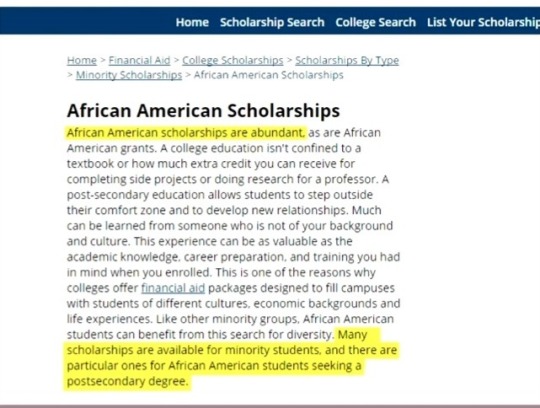
Low income:
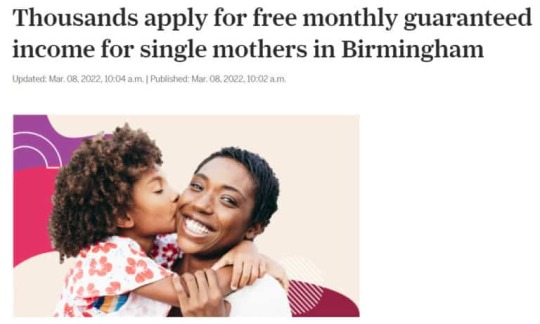


It’s open to illegal immigrants, too, but white people? Forget it. And when we learn that “800 Compton residents to get guaranteed income in two-year pilot program,” since Compton is only 2 percent white – yes, just 2 percent – white people won’t get that money.

Having to change the requirements of mental retardation, because too many blacks IQ's were that low.
https://mn.gov/mnddc/parallels2/pdf/90s/99/99-MRI-MLW.pdf


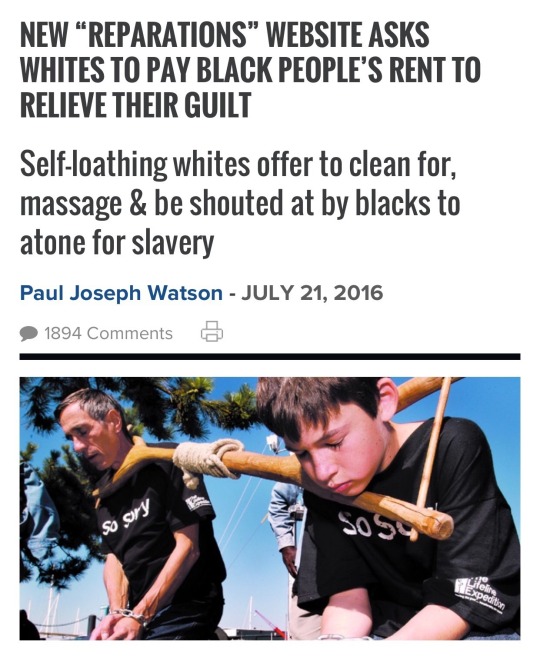
69 notes
·
View notes
Text
As we enjoy our day off, let’s take a moment to remember the significance of Juneteenth and explore some often-overlooked aspects of American history. The United States has a troubling history of breaking promises, especially towards non-white communities.
On “Freedom’s Eve,” December 31, 1862, African Americans eagerly awaited the Emancipation Proclamation. At midnight, enslaved people in Confederate states were declared free. Union soldiers, including many Black soldiers, spread the news across the South. Although full emancipation required the Thirteenth Amendment, slavery persisted in Texas until June 19, 1865. On that day, Union troops arrived and declared freedom for over 250,000 enslaved people, a milestone now celebrated as Juneteenth. This day, often called America’s second Independence Day, symbolizes enduring hope and resilience. If you’re interested in learning more, the National Museum of African American History and Culture offers valuable insights.
The Reconstruction era (1865-1877) that followed brought significant progress and challenges for African Americans. One of the most notable efforts was the “40 acres and a mule” policy proposal, aimed at redistributing land to newly freed African Americans. This originated from Special Field Orders No. 15, issued by Union General William T. Sherman in January 1865. The order allocated 400,000 acres of confiscated Confederate land in coastal South Carolina, Georgia, and Florida to freed slaves in 40-acre parcels. The Freedmen’s Bureau, established in March 1865, was authorized to distribute mules to aid in farming these lands.
However, after President Abraham Lincoln’s assassination, his successor, Andrew Johnson, reversed these orders and returned the land to its previous white owners. Consequently, the promise of “40 acres and a mule” was largely unfulfilled, leaving many freed African Americans without the means to achieve economic independence.
instagram
2 notes
·
View notes
Text
Black Doctors and the Legacy of Racism in Medicine

Before we get to the AI - go buy "Legacy: A Black Physician Reckons with Racism in Medicine" by Uche Blackstock. She's a high school classmate of mine and on a recent AI panel I was on I told people that I thought should be required reading ( The other book I made required reading were "Weapond of Math Destruction " and " Unmasking bias" ) Why should book not explicitly about AI be required reading for those involved with AI? One of the major dangers in AI is that it uses data that contains bias from our current society to predict future outputs/outcomes. So if we don't understand the racism and bias that is in medicine right now, using AI anywhere in healthcare essentially calcifies these biases behind opaque mechanical systems.
Here's what Perplexity says about the book:
"Legacy: A Black Physician Reckons with Racism in Medicine" is a memoir by Dr. Uché Blackstock, an emergency medicine physician and CEO dedicated to dismantling racism in healthcare. The book delves into the historic health care inequities and systemic racism, detailing Dr. Blackstock's family legacy of black female physicians and her own experiences as a physician and patient. It offers a searing indictment of the U.S. healthcare system, serving as a generational family memoir and a call to action. The book sheds light on the profound and long-standing systemic inequities that lead to far worse health outcomes for Black Americans and endangers the well-being of communities. It also addresses the flawed system that hampers the progress of Black patients and physicians, making it a compelling and necessary read for healthcare professionals, policymakers, and the general public[1][2][3].
Citations: [1] https://www.goodreads.com/en/book/show/66087028 [2] https://www.pbs.org/newshour/show/a-black-physicians-memoir-looks-at-the-legacy-of-medical-racism-in-america [3] https://www.harvard.com/book/9780593491287_legacy/ [4] https://www.penguinrandomhouse.com/books/705871/legacy-by-uche-blackstock-md/ [5] https://www.amazon.com/Legacy-Physician-Reckons-Racism-Medicine/dp/0593491289
So for today I wanted to highilight some other achievements of black doctors:
Some notable black doctors in American history include:
Dr. James McCune Smith (1813–1865): He was the first black American to earn a medical degree and practice in the United States. He also opened what is thought to be the country's first African American-owned pharmacy[3].
Dr. Rebecca Lee Crumpler (1831–1895): She became the first black woman in the United States to receive an MD degree. After the Civil War, she moved to Richmond, Virginia, where she worked with other black doctors caring for formerly enslaved people in the Freedmen’s Bureau[2][3].
Dr. Daniel Hale Williams (1856–1931): He founded Chicago’s Provident Hospital, the country’s first black-owned, interracial hospital, and performed the first-ever successful heart surgery two years later[3].
Dr. Charles Richard Drew (1904–1950): Known as the "father of blood banking," he pioneered blood preservation techniques that led to thousands of lifesaving blood donations[3].
Dr. Louis Wade Sullivan (b. 1933): He became the founding dean of what became the Morehouse School of Medicine, the first predominantly black medical school[2].
Dr. Solomon Carter Fuller: He was the first black psychiatrist in the United States and became an authority on Alzheimer’s Disease research[3].
Dr. Marilyn Hughes Gaston: She published a study of sickle-cell anemia that led to a nationwide test for newborns and became the first African American and female director of a public health bureau[3].
These doctors overcame significant challenges, including racism and prejudice, and made pioneering contributions to the field of medicine in the United States[2][3].
Citations: [1] https://www.everydayhealth.com/healthy-living/african-american-pioneers-who-changed-healthcare/ [2] https://www.aamc.org/news/celebrating-10-african-american-medical-pioneers [3] https://www.auamed.org/blog/african-american-doctors/ [4] https://guides.mclibrary.duke.edu/blackhistorymonth/chronology [5] https://interestingengineering.com/lists/black-doctors-medicine

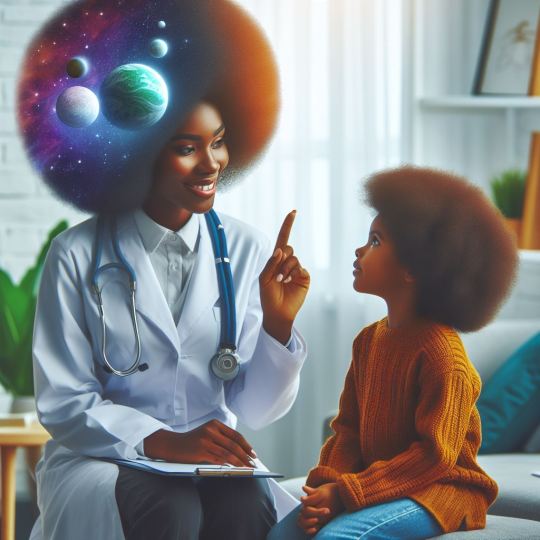
From Gemini: Pioneering Healers: A Glimpse into the Lives and Achievements of African American Doctors
From overcoming systemic barriers to making groundbreaking contributions, African American doctors have woven a remarkable tapestry of resilience, dedication, and excellence within the annals of medicine. Their stories, etched in struggle and triumph, not only illuminate their individual journeys but also shed light on the broader fight for racial equality in the United States.
The earliest documented Black physician in America, James Durham, emerged during the tumultuous years of the Revolutionary War. Denied formal medical training due to his race, he honed his skills through apprenticeships and self-study, eventually serving Continental Army soldiers and establishing a successful practice in New Orleans. Dr. Durham's story exemplifies the resourcefulness and determination that characterized countless Black medical pioneers.
Throughout the 19th century, figures like David Augustus Chisolm, the first Black graduate of Harvard Medical School, and Rebecca Lee Crumpler, the first Black woman to earn an M.D. in America, defied prejudice and carved their own paths. They faced not only societal discrimination but also limited access to education and resources. Yet, their unwavering commitment to serving their communities propelled them forward, paving the way for future generations.
The 20th century witnessed a surge in Black medical advancements. Dr. Charles Drew, known for his groundbreaking work on blood plasma storage, revolutionized wartime medicine and saved countless lives. Dr. Dorothy Lavinia Brown, the first Black resident at New York Hospital, became a prominent surgeon and advocate for healthcare equity. Their achievements resonated far beyond the medical field, serving as powerful symbols of Black excellence and defying long-held stereotypes.
However, the journey towards equality has been fraught with challenges. Despite their qualifications and contributions, Black doctors have historically faced discrimination in hiring, promotions, and access to funding. The fight for equal opportunities continues, with disparities in healthcare access and representation still prevalent today.
Yet, the legacy of African American doctors remains an inspiration. Their unwavering dedication to healing, coupled with their courage in the face of adversity, serves as a testament to the enduring human spirit. Their stories remind us of the vital role they have played in shaping American medicine and underscore the continued need for equity and inclusion in the healthcare system.
Reading List:
"Black Doctors in White America: Mobilization & Progress During World War II" by Charles W. Eagles
"Medical Apartheid: The Dark History of Medical Experimentation on Black Americans from Colonial Times to the Present" by Harriet A. Washington
"A Sickness in Our Land: Epidemics in the Atlantic World" by Virginia DeJohn Anderson
"Black Women Scientists in the United States" by Evelyn Fox Keller
"Charles R. Drew: The Man Who Saved the Blood" by Catherine Reef
"Dorothy Lavinia Brown: The Untold Story of the First Black Woman Surgeon" by Jessica M. Dorman
"Between Slavery and Freedom: Women of Color in the Civil War Era" by Stephanie Camp
"Medical Bondage: From Cotton to Crack" by Harriet A. Washington
"Black Skin, White Masks" by Frantz Fanon
"The Souls of Black Folk" by W.E.B. Du Bois
"Black Power: The Politics of Liberation in America" by Stokely Carmichael and Charles Hamilton
"Medical Nemesis: The Expropriation of Health" by Ivan Illich
"The Color of Violence: The Incarceration of the Innocent and the Making of an American Epidemic" by Evelyn Hoenig Jarvis
"Medical Racism: Race, Ethnicity, and Health Care in the United States" by Carlos V. Hill
"Do Black Patients Get the Same Care? Understanding Racial and Ethnic Disparities in Health Care" by Charles R. King
"Unbroken: A Story of Strength, Faith, and Survival in the Ever After" by Laura Hillenbrand
"Hidden Figures: The American Dream and the Untold Story of the Black Women Mathematicians Who Helped Win the Space Race" by Margot Lee Shetterly
"The Immortal Life of Henrietta Lacks" by Rebecca Skloot
"Educated" by Tara Westover
"Caste: The Origins of Our Discontents" by Isabel Wilkerson
This list, though not exhaustive, offers a diverse range of perspectives on the experiences and contributions of African American doctors within the broader context of American history and social justice. Through these voices, we gain a deeper understanding of their struggles, triumphs, and enduring legacy in the field of medicine.
It is important to note that the experiences of African American doctors are diverse and cannot be homogenized. This reading list attempts to offer a general overview of the topic, but further exploration into specific individuals and historical periods is encouraged.
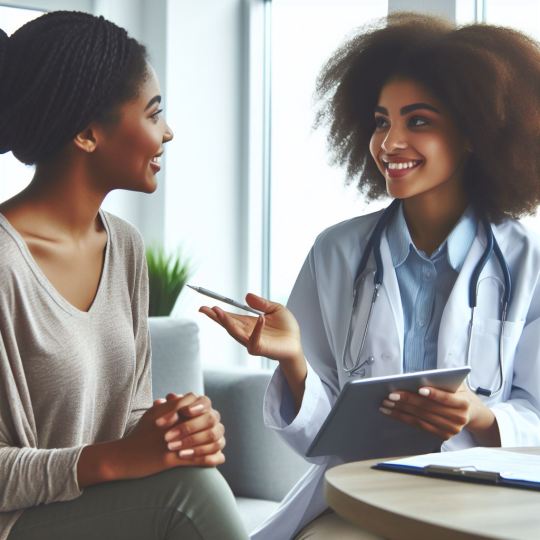
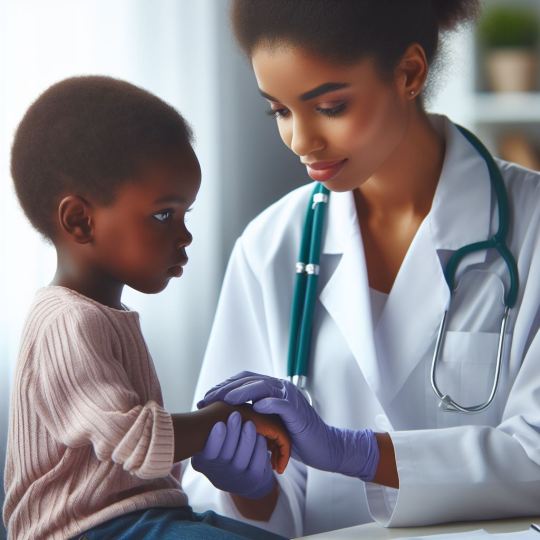






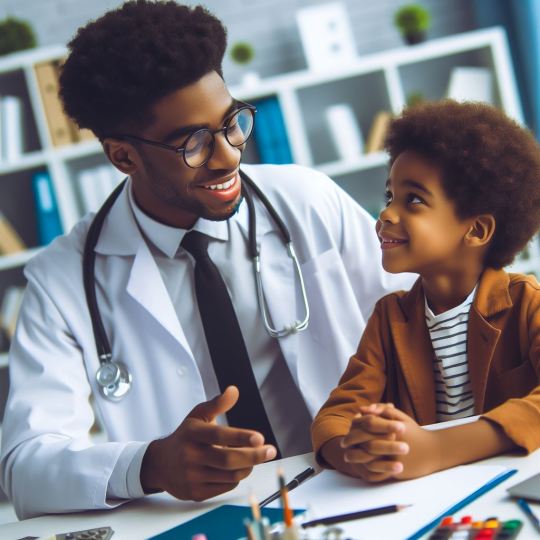
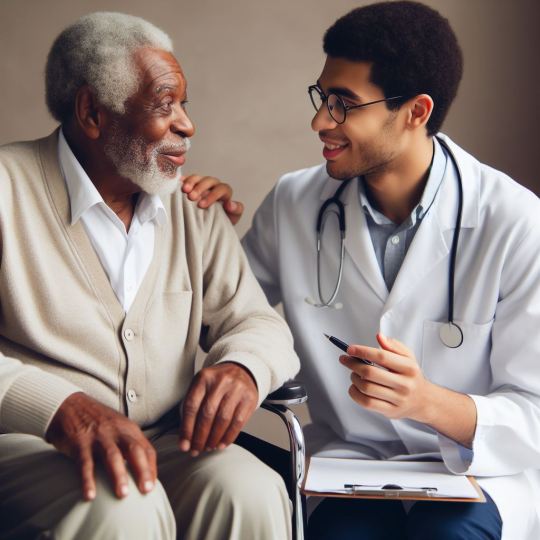

#black history month#blackhistorymonth#equality#dalle3#africanamericanhistory#black doctors#Legacy#Weapons of Math destruction#Unmasking bias
5 notes
·
View notes
